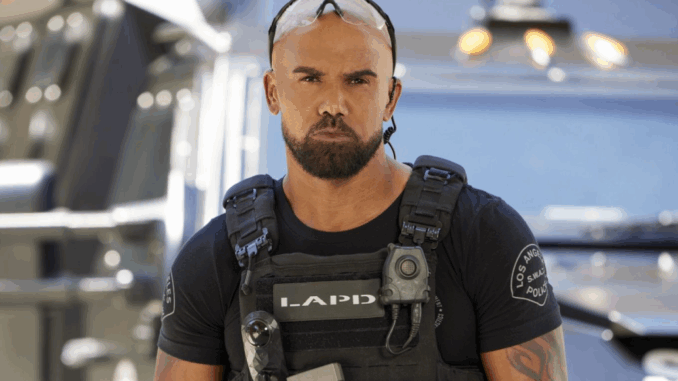
If you’ve ever watched S.W.A.T., you’ve probably wondered, “Wait… is this based on a true story?” With its realistic action scenes, authentic police procedures, and emotional depth, it feels like something ripped straight from real-life law enforcement. But how much of S.W.A.T. is fact — and how much is Hollywood magic? Let’s break it all down.
The Origin of S.W.A.T.: From 1970s TV to Modern Reboot
Before the CBS hit starring Shemar Moore ever hit screens, S.W.A.T. started way back in the 1970s as a gritty police drama created by Robert Hamner and developed by Rick Husky. It first aired in 1975 and ran for two seasons. The show followed a special weapons and tactics team taking on high-risk missions, from hostage situations to gang wars.
The concept was heavily inspired by the real-life development of SWAT teams in Los Angeles during the 1960s and 70s. That’s where fiction meets fact.
The Real-Life Birth of SWAT Teams
The first real Special Weapons and Tactics (SWAT) team was created in the Los Angeles Police Department (LAPD) in 1967. Officer John Nelson and Inspector Daryl Gates came up with the concept after several major incidents — including riots and heavily armed shootouts — proved that regular patrol officers weren’t equipped to handle such threats.
Their idea? A highly trained, tactical unit capable of dealing with dangerous situations that required special equipment, strategy, and teamwork.
So, yes — the show’s core idea is inspired by real police history.
How the Real LAPD SWAT Changed Policing Forever
The LAPD’s creation of SWAT units changed law enforcement nationwide. After the first successful deployments — like the response to the 1969 Black Panther standoff — the idea spread quickly.
By the 1980s, nearly every major city in the U.S. had its own SWAT team. These units handled everything from hostage rescues and terrorist threats to high-risk arrests and counter-narcotics operations.
That legacy forms the backbone of both the original S.W.A.T. series and the 2017 reboot.
The Modern CBS Reboot: Realism Meets Entertainment
When CBS rebooted S.W.A.T. in 2017, they didn’t just copy the old show. They rebuilt it with a modern edge — grounded in real-world tactics and social issues.
Shemar Moore’s character, Daniel “Hondo” Harrelson, is a former Marine who returns to his Los Angeles neighborhood to lead an elite SWAT team. The show blends intense action with meaningful themes like race, justice, loyalty, and the relationship between polic
While the characters are fictional, many of the scenarios and tactics are modeled on real LAPD SWAT procedures.
Do Real Police Advise the Show?
Absolutely. The S.W.A.T. production team works closely with real police consultants and former SWAT officers to ensure accuracy in tactics, gear, and language.
Even the actors undergo physical training and tactical rehearsals to make their movements and responses realistic. From the way they hold weapons to how they communicate on missions, much of what you see is based on real police methods — just with more Hollywood-style explosions.
Shemar Moore’s Commitment to Authenticity
Shemar Moore, who plays Hondo, takes authenticity seriously. He’s often spoken about his respect for real officers and the challenges they face. Before filming, he and his co-stars trained with actual SWAT professionals to learn everything — from the correct way to breach a door to maintaining composure under pressure.
That dedication gives S.W.A.T. its signature realism. You can feel the intensity because the actors treat every scene like it’s real life.
Fiction vs. Reality: Where the Line Is Drawn
Now, while S.W.A.T. takes cues from reality, it’s still a scripted drama — meaning not every storyline is pulled from real events.
The show dramatizes missions for entertainment value. For instance, episodes might include large-scale shootouts or undercover operations that would rarely happen in quick succession in the real world. The goal is to keep viewers engaged while still honoring real police work.
So, it’s safe to say: S.W.A.T. is inspired by reality, but not a direct retelling of true events.
The Legacy of the Original 1970s S.W.A.T. Series
The 1975 version of S.W.A.T. paved the way for today’s portrayal of tactical units in pop culture. Even the iconic theme song — which you can still hum after hearing it once — became a pop hit.
That original series brought the concept of “SWAT” into the mainstream. Before that, most people had never even heard of such teams. It glamorized their heroism but also highlighted their precision, discipline, and teamwork.
The 2003 S.W.A.T. Movie Connection
You might remember the 2003 action movie S.W.A.T. starring Samuel L. Jackson, Colin Farrell, and Michelle Rodriguez. That film was a modern update of the original show and laid the groundwork for the tone of the CBS reboot years later.
It combined fast-paced action with themes of loyalty and moral choice — much like the new series. While the movie wasn’t based on a true story either, it leaned heavily on real SWAT tactics and training.
How S.W.A.T. Reflects Real Social Issues
One of the reasons S.W.A.T. feels so real is because it doesn’t shy away from current topics. Episodes often explore police-community relations, racial profiling, and the psychological stress of being in law enforcement.
These aren’t random storylines — they’re drawn from actual discussions happening in police departments and communities around the country.
By weaving these themes into an action series, S.W.A.T. manages to stay both thrilling and socially relevant.
The Real Heroism Behind the Fiction
It’s worth remembering that while the show is fictional, real SWAT officers do exist — and they face life-or-death situations every day. Their work often goes unseen, handled quietly to prevent violence or save lives.
The show pays tribute to that bravery, showing both the adrenaline and emotional cost of the job.
The Technical Accuracy That Sets S.W.A.T. Apart
Unlike many cop shows, S.W.A.T. nails the technical details. From the weapons and armor to the radio codes and formation tactics, the show stays true to reality wherever possible.
This precision helps viewers feel immersed — as if they’re part of the team themselves. That’s a big reason fans love it; it’s action-packed but grounded.
Why Audiences Think It’s Real
Ever notice how S.W.A.T. feels more authentic than most police dramas? That’s intentional. Every scene — from the sound design to the teamwork on missions — mirrors real SWAT dynamics.
Combine that with emotional storytelling and strong character arcs, and you get a show that feels too real to be fake. It’s a perfect blend of realism and heart.
The Balance Between Drama and Respect
The creators of S.W.A.T. have said they aim to entertain without misrepresenting law enforcement. They work hard to show both the human side of officers and the consequences of their actions.
The show doesn’t glorify violence — it focuses on responsibility, teamwork, and moral judgment. That’s what keeps it respectful while still exciting.
What Makes S.W.A.T. Stand Out Among Police Dramas
What truly sets S.W.A.T. apart is its mix of authentic action and emotional depth. It’s not just about kicking down doors; it’s about leadership, loyalty, and personal sacrifice.
You feel connected to Hondo, Street, Deacon, and Chris because they’re not superheroes — they’re people trying to do the right thing in a chaotic world. That emotional truth keeps the series grounded in reality, even when the bullets fly.
So, Is S.W.A.T. Based on a True Story?
In short: not exactly, but kind of.
S.W.A.T. is not based on one specific true story or real-life person. Instead, it’s inspired by the real LAPD SWAT units and the situations they face. It combines factual tactics and training with fictional drama and emotional storytelling.
Think of it like this — the uniforms, gear, and teamwork are real, but the personal stories are created to entertain and inspire.
Conclusion
S.W.A.T. strikes the perfect balance between realism and storytelling. While it’s not directly based on a single true story, its roots lie deeply in real police history and the dedication of officers who protect their communities every day.
From the original 1970s show to the modern CBS reboot, S.W.A.T. has evolved with time but never lost its foundation in truth, teamwork, and courage. So next time you see Hondo and his team in action, remember — while the drama might be scripted, the spirit behind it is 100% real.
FAQs
1. Is the show S.W.A.T. based on real LAPD units?
Yes, the show is inspired by the real Los Angeles Police Department’s Special Weapons and Tactics team formed in the 1960s.
2. Are the characters in S.W.A.T. real people?
No, all the characters — including Hondo, Deacon, and Street — are fictional but inspired by traits and experiences of real officers.
3. How accurate is the S.W.A.T. show to real police work?
It’s fairly accurate in terms of tactics and teamwork since real SWAT officers serve as consultants. However, the storylines are dramatized for entertainment.
4. Did Shemar Moore do real SWAT training?
Yes, Shemar Moore and other cast members trained with actual SWAT professionals to learn weapons handling, teamwork, and mission planning.
5. Why do fans think S.W.A.T. is based on a true story?
Because of its realism, attention to detail, and emotional storytelling, many viewers feel like they’re watching real-life events unfold — even though it’s fictional.


